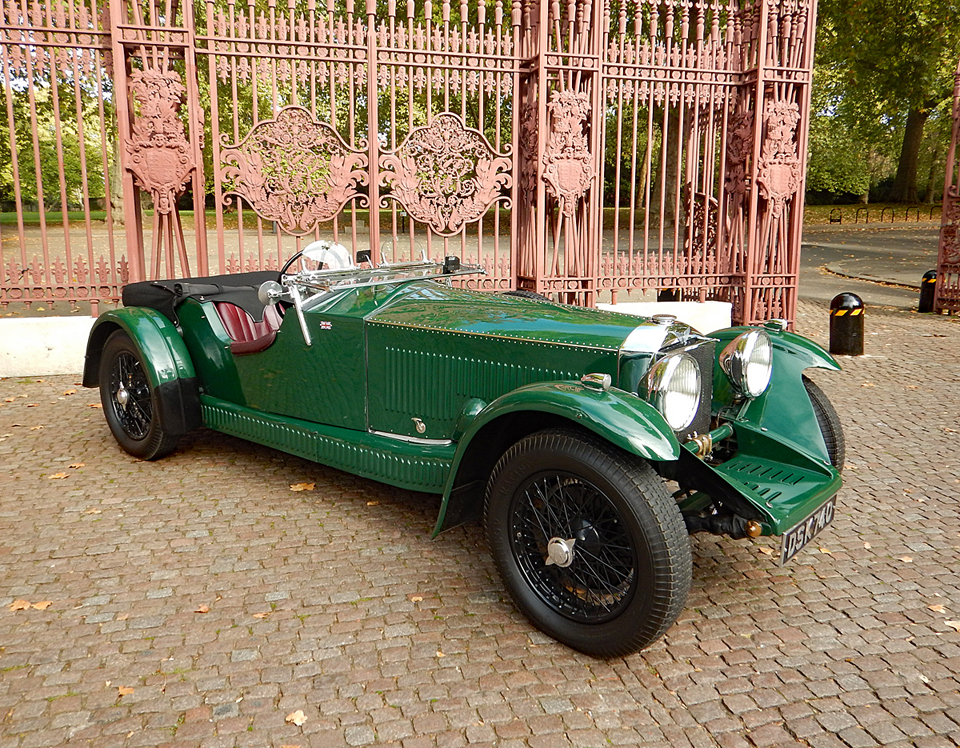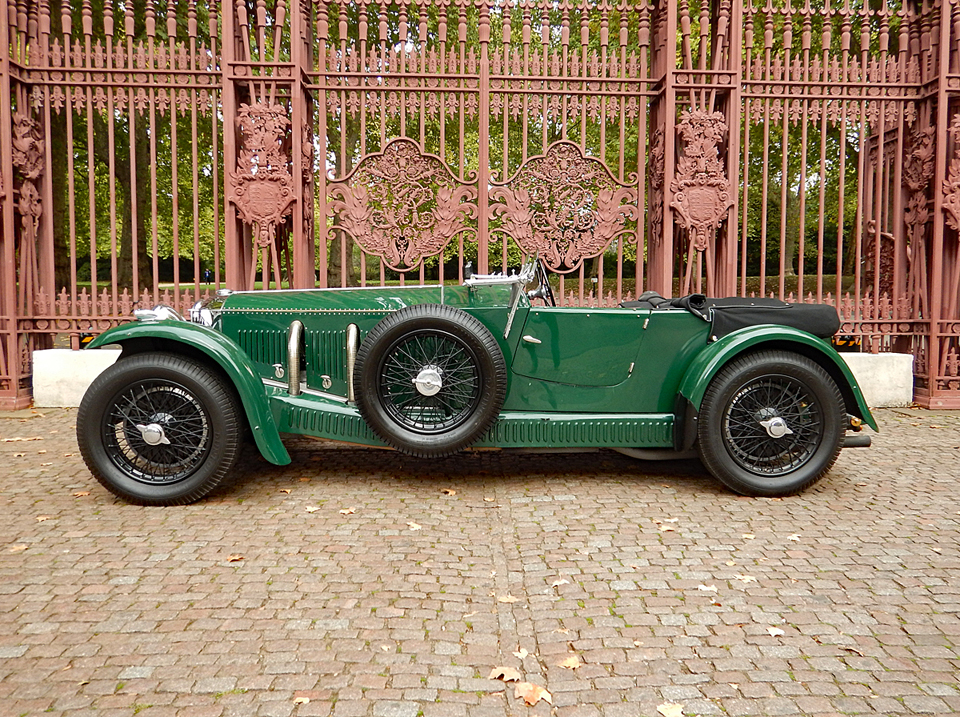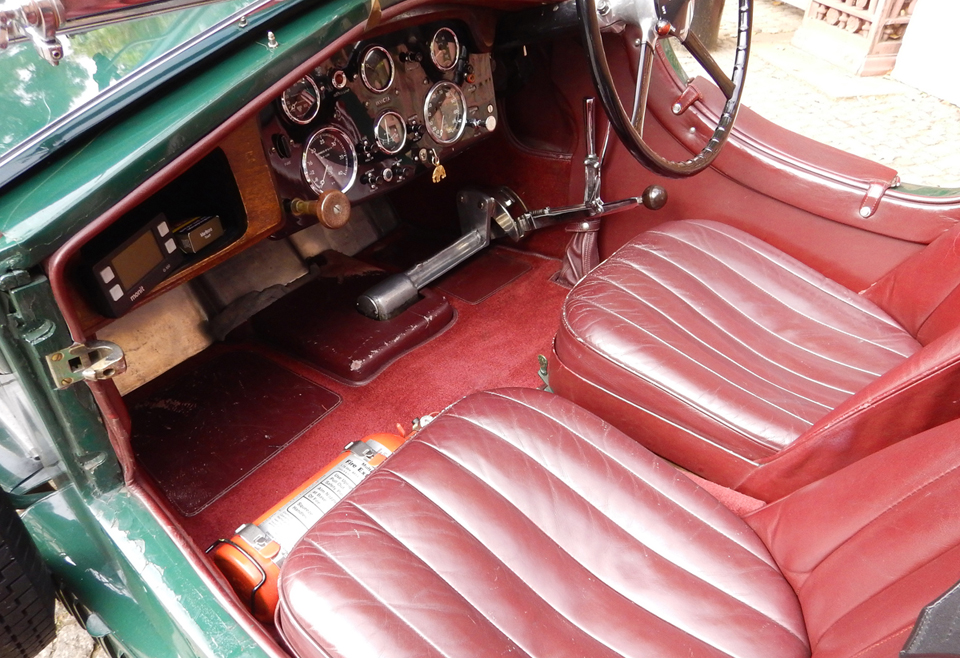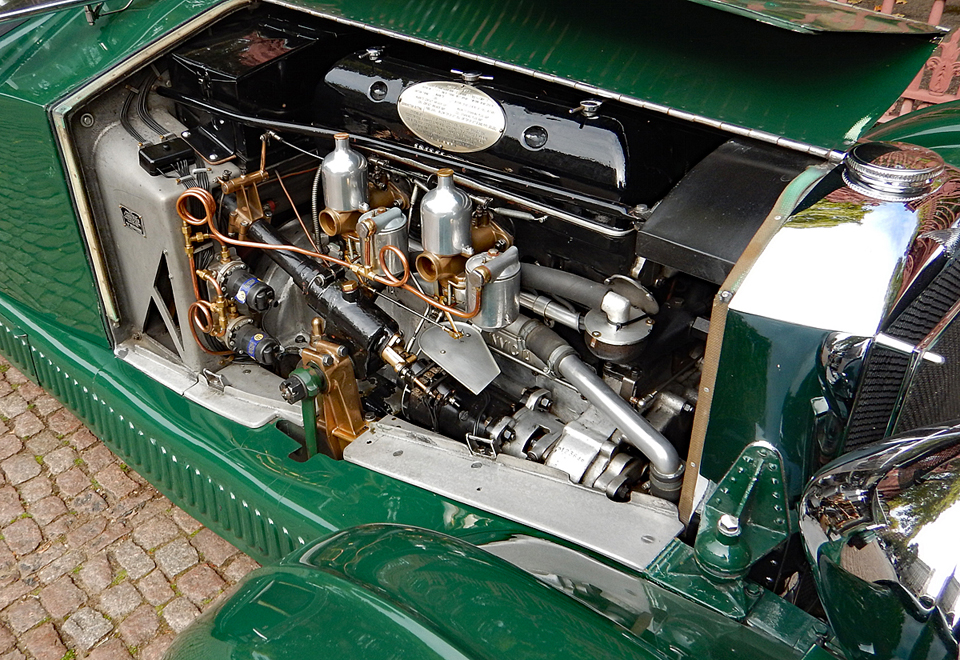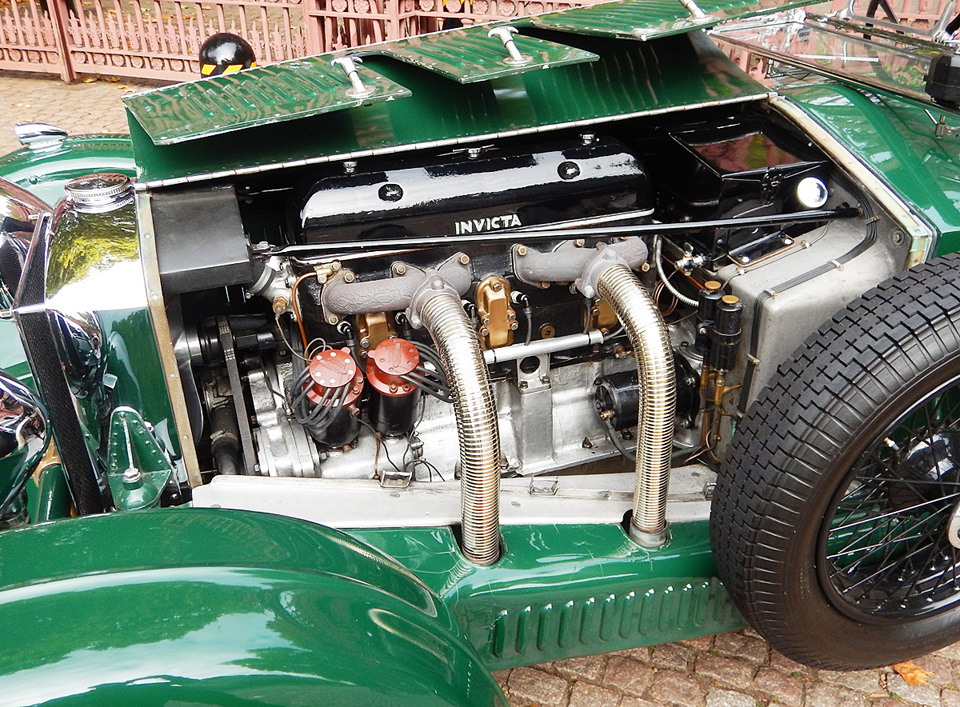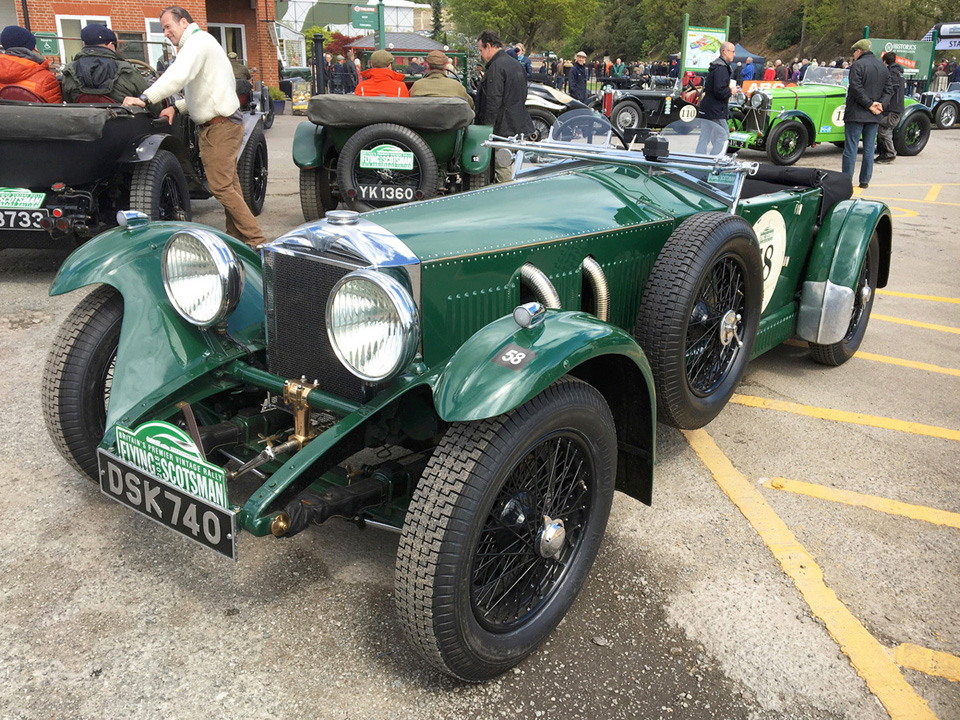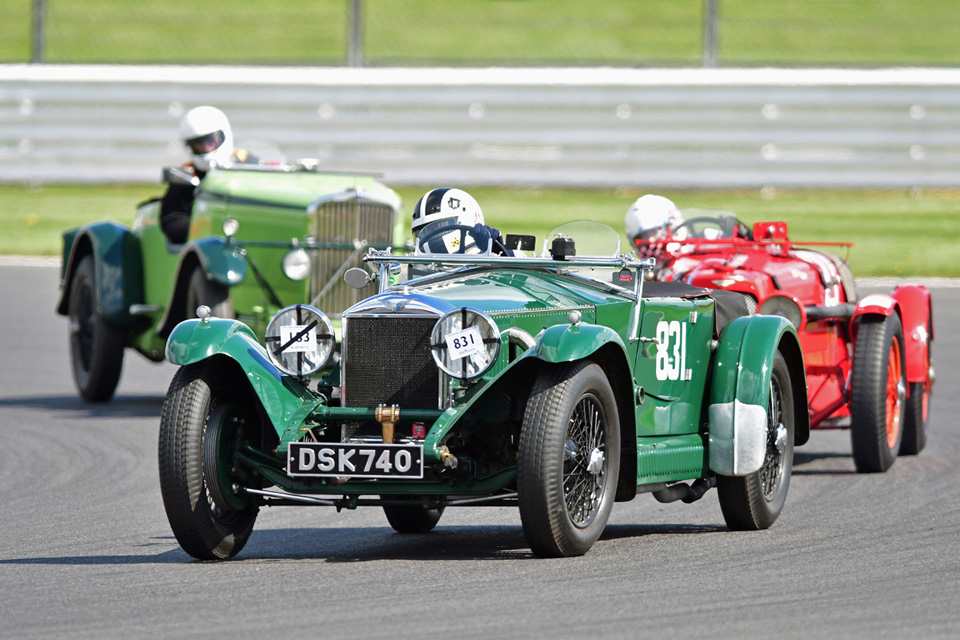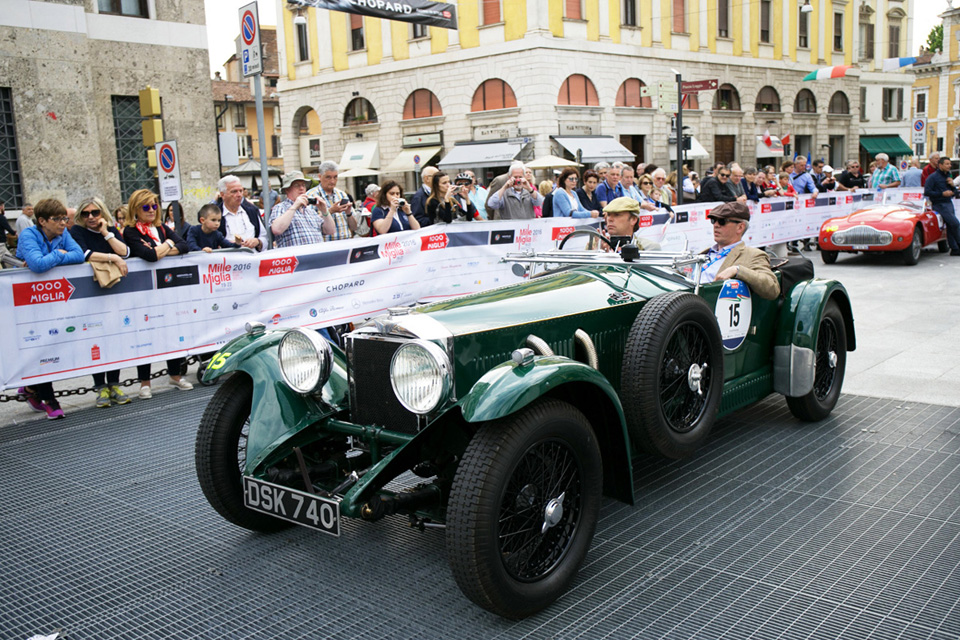Chassis S 165
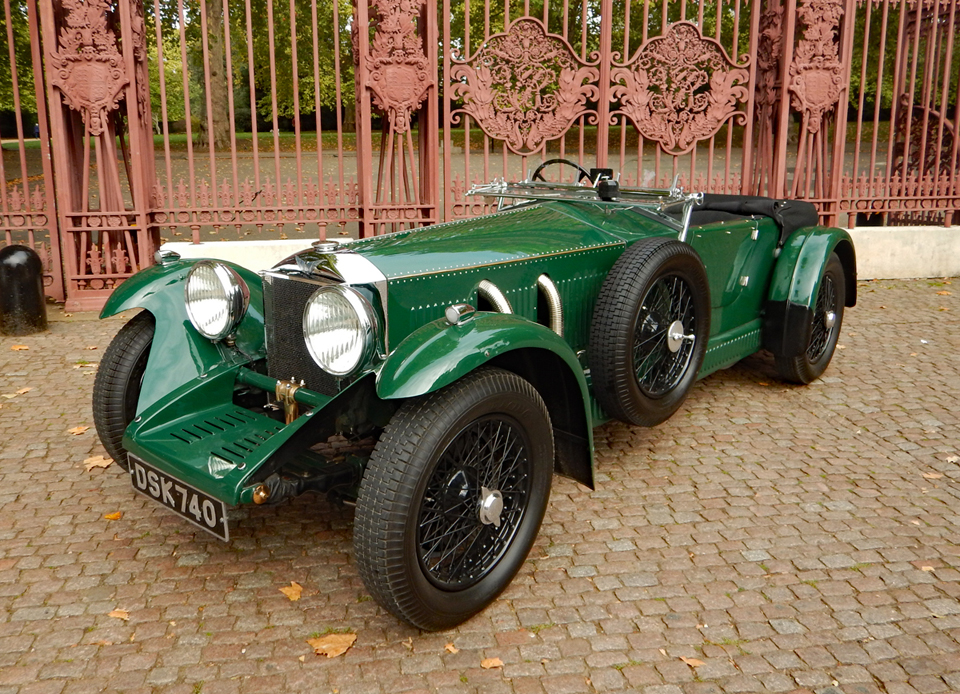
‘Invicta Cars’ was founded and run by the successful businessman, Noel Macklin. He was born in 1886, educated at Eton and in the Great War served as a Captain in the Royal Horse Artillery. He was wounded and invalided out in 1915. He established the Invicta Company in buildings on his estate in Cobham, Surrey in 1925. He had the financial backing of Oliver Lyle (Tate and Lyle sugar magnate) and the Earl Fitzwilliam. Invicta produced a range of cars but the marque is best known for its ‘100 mph’ Sports Tourer, the S Type.
Macklin’s goal was to produce a sportscar with the quality and reliability of a Rolls-Royce and performance and handling that would better a Bentley. Launched at the London Motor Show in 1930 the S Type was on a par with today’s Supercars. The cost was approximately £ 1,500, a huge amount at that time when the average house price was about £ 200, equating to about £ 1,750,000 in today’s money.
The S Type was made of the finest materials available, an immensely strong nickel-steel chassis lugged together with massive high quality bronze castings and fitted with a cast aluminium bulkhead and bonnet landings. The car cut a very low profile and to achieve this the chassis legs were ‘under-slung’ passing below the rear axle. The S Type was powered by a Meadows 4½ Litre, six cylinder engine with twin bronze bodied SU carburettors. In Macklin’s own words “the essential characteristic of the Invicta was luxurious speed” and he was so confident of his product that he offered a Rolls-Royce style three year guarantee. The factory standard offering was the S Type chassis fitted with coachwork by Carbodies of Coventry. The styling was rakishly attractive with broad wings and extensively louvered side valances. The long bonnet embellished with domed rivets and twin chrome exhausts protruding left no doubt that this was a car with sporting potential.
S Types were widely used for racing and rallying, hill climbs and speed trials. In 1931 a young Donald Healey entered the Monte Carlo Rally in an S Type and won. His confidence in the car was such that he returned the following year and was rewarded with second place. In 1932 the lap record for Brooklands and the fastest times at the Shelsley Walsh Hill Climb and the Stelvio Pass Hill Climb were all held by Invicta. There were also numerous victories in International Alpine Trials.
Despite the build quality and competition success Invicta, like many others, found selling expensive cars into the financial head winds of the ‘Depression’ hard going. In 1933 production was scaled down and moved to their London facility in Flood Street, Chelsea and by the end of 1934 production had ceased. Ultimately only 77 cars were built.
However, there was a faction of buyers who remained un-troubled by the economic struggles of the Western World, and these were the rulers of India; the legendary Maharajas, Ranas, Nawabs and Mirs, collectively known as the Indian Princes. From the dawn of motoring the automobile in India was regarded as a symbol of wealth, power and sophistication and examples from the best manufacturers and fitted with the finest coachwork were sought out and imported.
Only one Invicta S Type was purchased new and imported into India. A second S Type is known to exist there and this is Chassis S 104 built in 1931. However, this car was imported by Mr. Roni Khan in 1965 and has since passed into the collection of Pranlal Bhogilal.
Chassis S 165 was ordered by its first owner, Nizam Uddin Valuddin Jillani of Naunada on 6th March 1934. He has been described as a Maharaja although this has yet to be confirmed. He must have been wealthy and if not a Maharaja then one of the great zamindars (land owners) or millionaire merchants. We know he was impatient to get his new car from the account of Albert Deavin, one of the fitters from 1934 who built the car in the London works.
He was re-united with the car in 1992 and told how the new owner had telephoned the works to hear about the progress. Being told that the car was practically finished he demanded to hear the horns, so the car was pushed as near as possible to the open office window and Deavin sounded the horns while the new owner listened appreciatively. The car was shipped to India either later that year or early in 1935.
The history file contains an original Registration Book from 1937 issued by the Calcutta Police to Nasir Kurishi Esq who must have been the cars second owner. This wonderfully preserved historic document confirms its chassis and engine number along with its Calcutta registration number 49668 that appears in a number of period photographs.
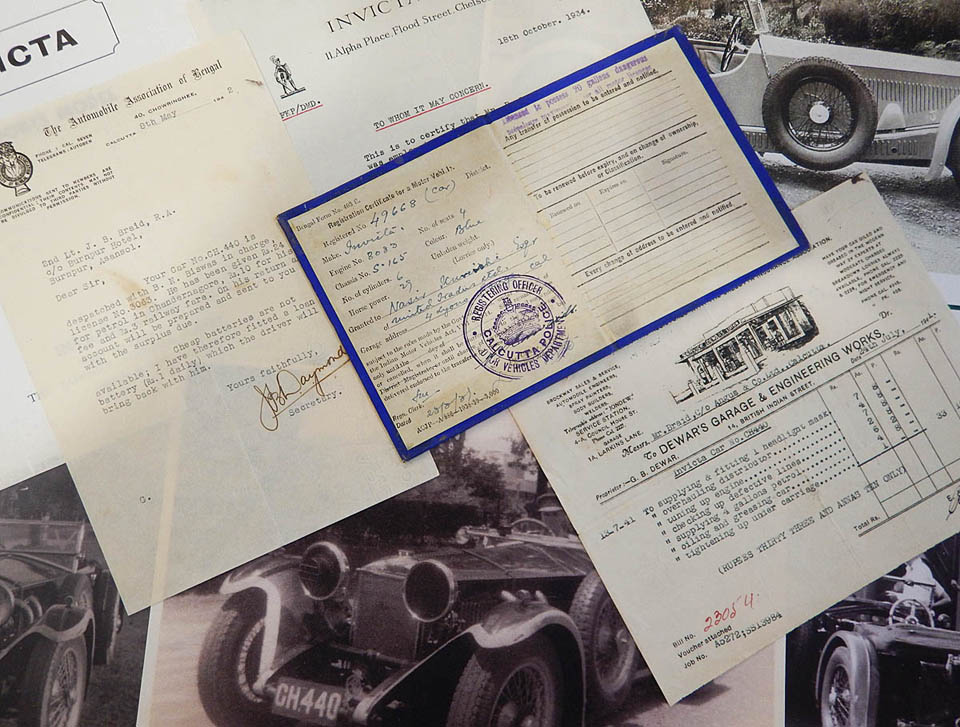
The next owner is very well documented as his son has supplied a wealth of original letters, photos and information. James Braid was born in Dundee in 1910 and worked in the textile industry. To progress his career with the Angus Jute Company he moved to India in 1931, aged just 21. He enjoyed India, quickly leaned Hindi and was successful but with war clouds looming he was also serving with the Royal Artillery and training the Indian Army. The European conflict must have seemed a long way off as in February 1940 when he needed to upgrade his car he became the proud owner an S Type Invicta, chassis S 165. He bought it from Union Trading Limited in Calcutta, part exchanging his lowly Rover in the process.
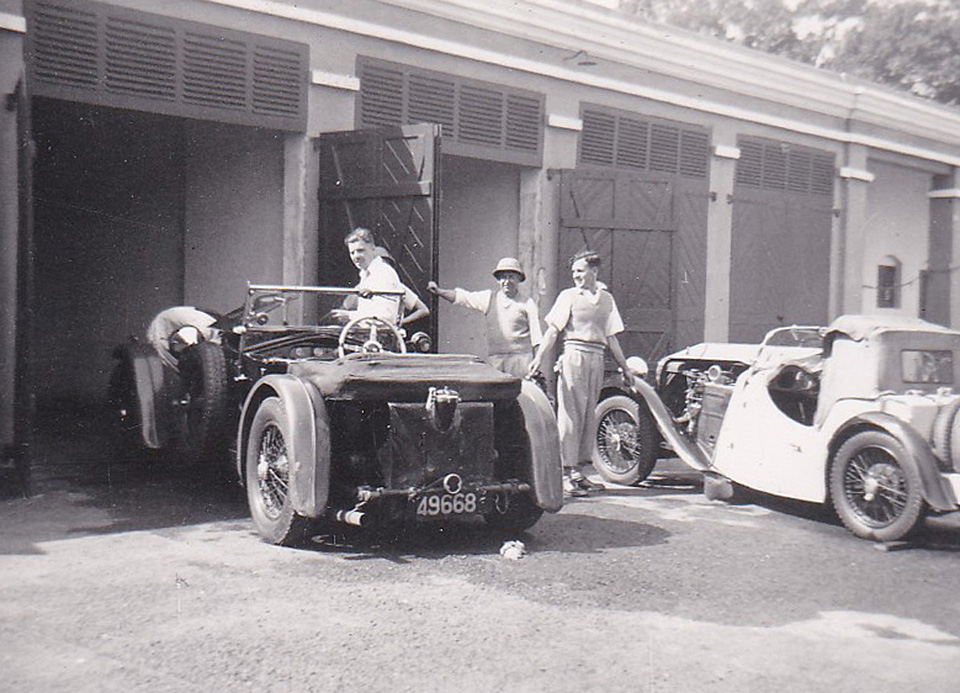
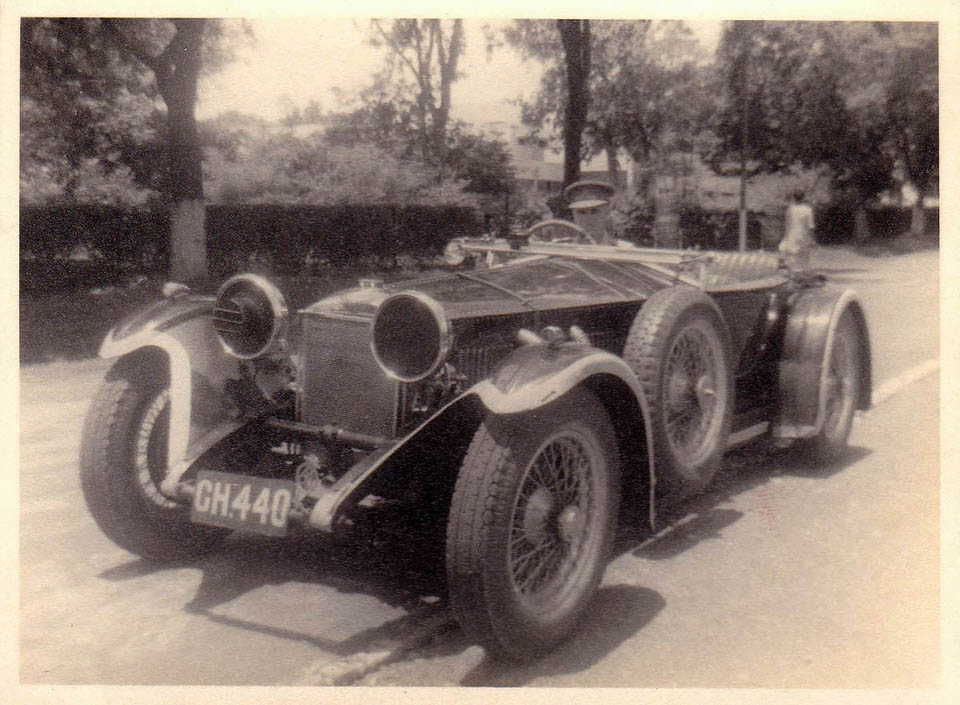
Particularly evocative is the photo of Braid wearing his officer’s uniform and with the Invicta in ‘black-out’ trim with masks on the headlights and two inches of white paint all around the extremities of the car. The authorities were convinced that Calcutta would be bombed by the Japanese and the black-out regulations were the same as imposed on London in the ‘Blitz’. Braid sold the car in 1942 following the death of his wife from typhoid.
S 165 remained in India and was bought in the early sixties by a Lars de Jounge, a Swede who was living and working in Poona. He exported the car when he left in 1966, although this entailed a degree of dismantling due to heritage restrictions. The Invicta Club magazine recognised him as a new member in 1966 with a car that needed restoration. The car remained largely untouched until 1967 when De Jounge posted again in the club magazine asking for recommendations of someone to “build the engine and do the other repairs needed”.
The original engine ended up with the highly regarded engineer, Maurice Leo of Beaconsfield, Bucks. Rather than rebuild the original unit he supplied De Jounge with one of the W.O. Bentley improved motors from a Lagonda LG 45. Back in the day this was quite a common occurrence with little thought given to keeping the old motor just because of its numbers. S 165’s engine remained with Leo in Beaconsfield and in 1970 the car travelled to California where De Jounge had relocated.
The car’s next owner was Don Williams of the celebrated ‘Blackhawk Museum’ in Danville, California. He bought the car in 1972 and kept it for eighteen years. In 1975 he showed the car at the Pebble Beach Concours and it was placed third overall and in 1977 the car appeared in the Automobile Quarterly, Vol 15, No:3.
The car remained in the USA until it 1990 when it was bought by Derek Green of Cedar Classic Cars Ltd. It then appeared in a Sotheby’s London Auction on 16th March 1991 where it was bought by gentleman dealer, Nigel Dawes. With cosmetic improvements the car is re-offered at a Brooks Auction at Olympia in October 1992. S 165 was then bought by Mr. Christopher Jacques (whose firm famously produces croquet sets known the world over). Although he only kept the car for three years he understood the growing importance of matching engine and chassis numbers. After a little detective work he approached Maurice Leo to see if he still had the original unit and was able to re-acquire it for the modest fee of £ 5,000. After 28 years apart the engine and the car were re-united, although the Lagonda unit continued to do the work in the car.
In 1995 Jacques sold the car through London dealer, Gregor Fisken and it was bought by Peter Livanos in a deal organised by his friend and Aston Martin business partner, Victor Gauntlet. At the time they were both keen competitors in historic events and accordingly S 165 was successfully entered in the 1997 Mille Miglia. However, Mr. Livanos had another S Type and S 165 was offered for sale in a Brooks auction at Olympia on 14th April 1999.
The car was bought by a Midlands based collector and enthusiast, Gordon Willey. He kept the car for 16 years until 2015 when the current owner acquired it.
Since then S 165 has been maintained by marque expert, Paul Kitcher and has successfully competed in numerous events including the 2016 VSCC Pomerory Trophy and Prescott Hillclimb, the 2016 Mille Miglia, the 2017 Silverstone Classic, the 2017 Goodwood Revival, the 2018 Flying Scotsman Rally, 2019 Silverstone Classic and the 2021 Goodwood Revival. It has appeared at numerous shows and concours events and won the “Spirit of Motoring” award at the 2016 Blenheim Concours and was second in the 2022 “Levitt Concours” at Hampton Court.
S 165 is a highly original car with a fascinating international history. It is one of only 77 Low Chassis Invictas built and one of less than 30 fitted with the desirable Carbodies Tourer coachwork. It is offered for sale in fine running condition and complete with its original ‘matching numbers’ engine. The three history files that accompany the car contain a wealth of original documents, letters, photos and invoices.
